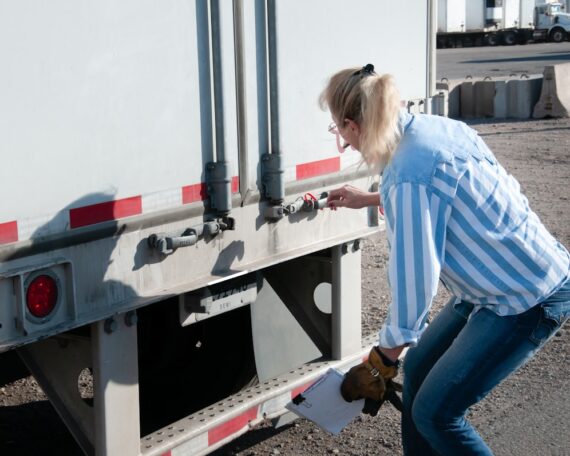Texas truck driver sentenced in scheme to smuggle more than 900 migrants in tractor trailers

Semi Truck in Motion. Semi Track Speeding on the American Highway. Motion Blurred. Blue Tones. Transportation and Spedition Photo Collection.
This week, a Texas truck driver was sentenced to prison for his role in a scheme to smuggle hundreds of migrants from Mexico to San Antonio.
Dallas resident Sedrick Zelitis Smith, 47, was sentenced to 84 months in prison for conspiracy to transport undocumented non-citizens, according to the U.S. Attorney’s Office for the Western District of Texas.
Smith’s arrest and conviction is a result of a Homeland Security investigation into a human smuggling ring that began in May 2021.
Officials say that Smith operated as a driver who used his CDL to smuggle loads of people who came to the U.S. from Mexico, transporting trailers loaded with humans from Laredo to San Antonio.
The human smuggling loads included approximately 30 migrants to more than 100 packed into a single trailer.
Officials also say that Smith operated as a go-between for other truck drivers and the organizers of the smuggling operation, and that he assisted in the theft of tractor trailers to use in the scheme.
The human smuggling ring reportedly transported more than 900 people in at least 19 human smuggling events.
Nine other people have been indicted in connection with this case.
“With the rise of human smuggling in recent years, it is absolutely critical that we send a message to criminals throughout all levels of these organizations that their crimes at the expense of vulnerable individuals are serious, they are dangerous, and we are here to readily prosecute,” said U.S. Attorney Jaime Esparza for the Western District of Texas. “I appreciate the dedication of our partners at HSI and our Joint Task Force Alpha initiative. Their efforts have been essential in taking down this HSO and many others. We’ll continue to dismantle these groups and serve justice together.”
“Justice was served for a human smuggler responsible for coordinating the transportation of hundreds of non-citizens from Laredo to San Antonio. These non-citizens were crammed into tractor trailers, during multiple smuggling events in the stifling Texas heat,” said Special Agent in Charge Craig Larrabee for HSI San Antonio. “HSI is committed to aggressively target human smugglers and smuggling organizations who continually victimize people for profit.”


